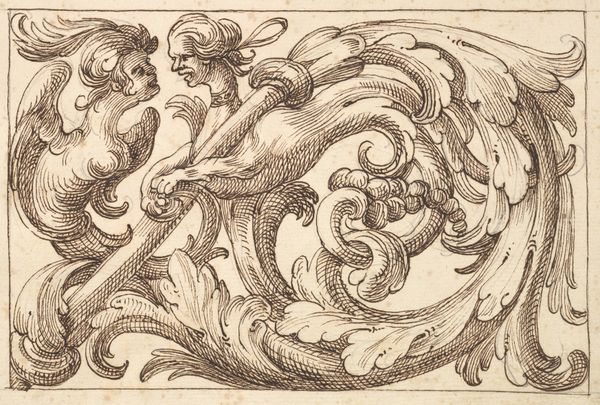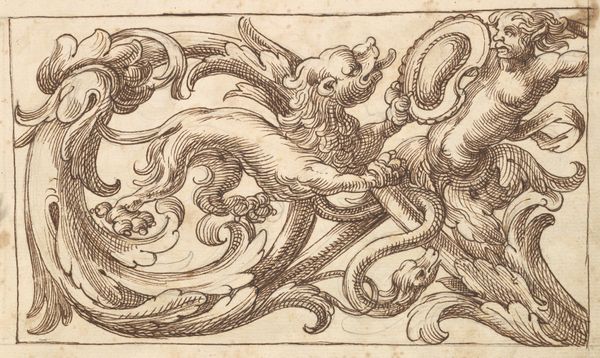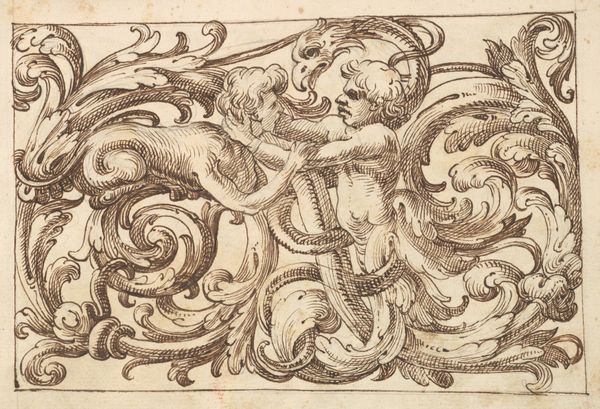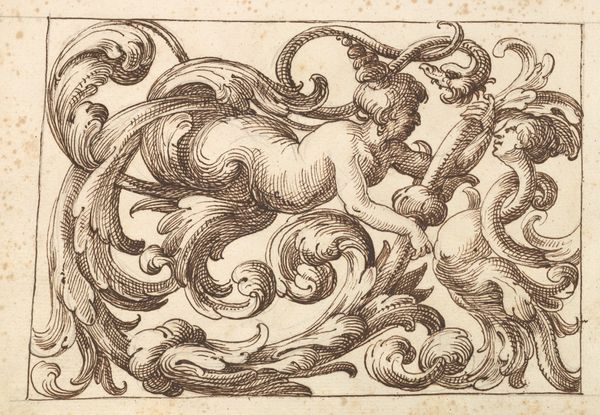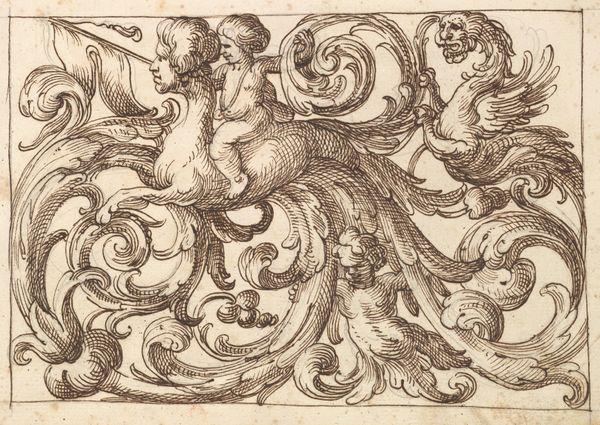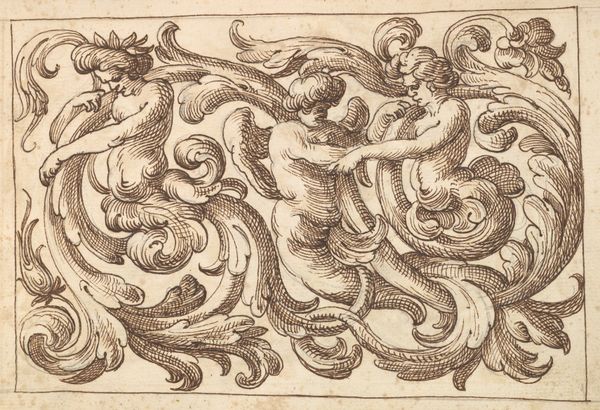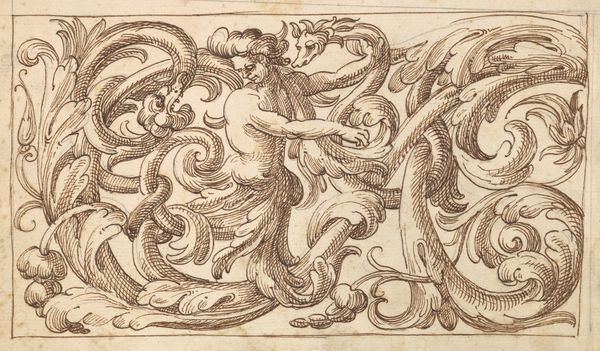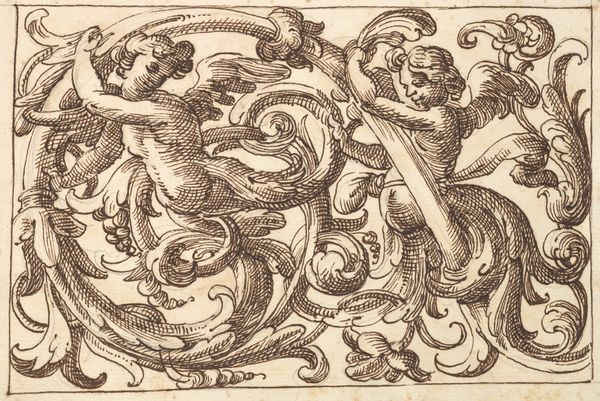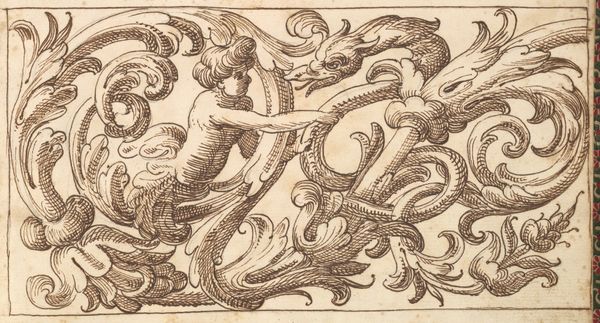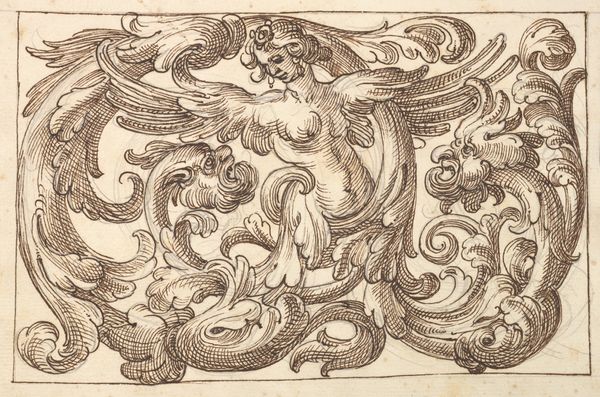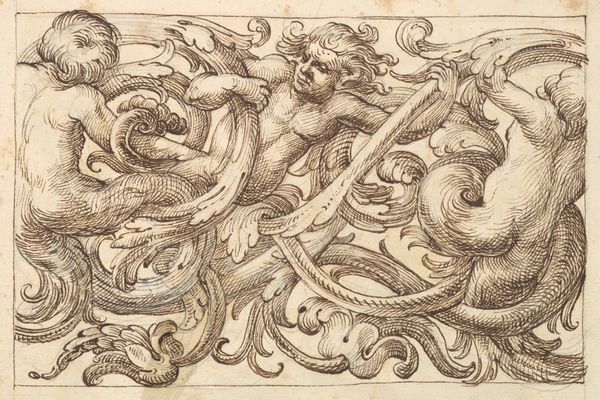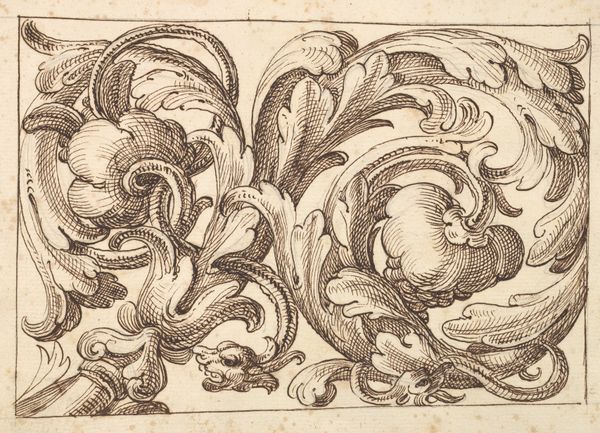
Horizontal Panel Design with Two Young Male Figures Interspersed between Acanthus Rinceaux 1600 - 1650
0:00
0:00
drawing, print, engraving
#
drawing
#
allegory
#
baroque
#
pen drawing
# print
#
pen illustration
#
pen sketch
#
mannerism
#
figuration
#
academic-art
#
engraving
Dimensions: Sheet: 7 3/16 x 10 5/16 in. (18.3 x 26.2 cm)
Copyright: Public Domain
Curator: Ah, here we have a "Horizontal Panel Design with Two Young Male Figures Interspersed between Acanthus Rinceaux", dating back to somewhere between 1600 and 1650. Editor: My first impression is organized chaos! It’s this explosion of foliage with figures playfully embedded; a sort of botanical rave. It reminds me of climbing ivy on an ancient building, figures appearing in between. Curator: Well, it certainly embodies the stylistic tendencies we associate with late Mannerism trending into Baroque sensibilities. This drawing, probably intended as a print, highlights the period's fondness for elaborate ornamentation. The anonymous artist utilizes the pen to render complex visual textures within this composition, emphasizing depth, movement, and theatricality. Editor: Absolutely! You get lost in the linework. I imagine artisans using this as inspiration for elaborate plasterwork, or carved furniture. I'm really drawn to the figures themselves, they seem half human, half foliage. What’s up with that? Curator: The hybrid figures, common in both Mannerist and Baroque art, echo the period's fascination with metamorphosis and allegory. Think of it as the Renaissance taking root – literally! It embodies ideals of harmony, and the integration of humanity and the natural world into designs, especially those related to gardens and landscapes. These ornamental prints played a key role in circulating artistic ideas across Europe during that time. Editor: Yes, that’s so fascinating to think of this existing pre-internet. This little sheet traveling, influencing the styles of grand estates. Looking closely, the cross-hatching gives everything this incredible dimensionality, despite it just being lines on paper. Curator: Precisely. These designs reflected broader cultural shifts towards embracing complexity, and theatricality. The rise of powerful aristocratic families fueled a demand for more opulent, expressive decoration. The political implications of stylistic choice become rather significant when you start assessing how visual choices support social ideologies. Editor: In a way, the swirls almost overwhelm the eye—but perhaps that’s the point. I suppose if you saw this integrated into the design of a grand interior, its function becomes a different story. So, any advice to our listeners walking away from this artwork today? Curator: Consider this: these complex arrangements were far from simple, rather visual signifiers in a very specific cultural context, signaling status and a particular worldview that should remind us that design has agency, then and now. Editor: Beautiful! And on that note, I feel ready to go frolic in some foliage.
Comments
No comments
Be the first to comment and join the conversation on the ultimate creative platform.
